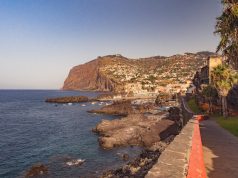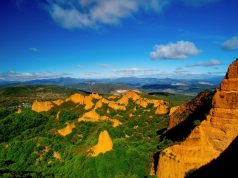Too many new photographers overly focus on the hardware. But it should be abundantly clear by now that you could use a $2,000 camera while a professional used an iPhone. And the professional would still take better pictures without any post-processing. Let her do a bit of editing, and it wouldn’t even be close.
While the hardware is fun to play with, it is not the heart of making great pictures. To paraphrase the Gunslinger, you don’t aim with your hand. You aim with your eye. You do not shoot with your hand. You shoot with your mind.
Great photography is less about what’s in your hand, and more about what you see, and how well you translate what you feel into what you do. You fine-tune your eye with practice. And you fine-tune your mind with knowledge. Using stand-alone hardware, you are going to have to know things like how to change your camera’s shutterspeed. You will also need to understand aperture and exposure.
But regardless of hardware, you are going to need to know a little about the type of photo you are trying to take. There are three types you need to know about regardless of skill level. Here are the three, and how to make the best of them:
1. Selfie
Taking a good selfie while traveling alone is one of the toughest shots you will do. It is also one of the most common. Your best friend will be the much-maligned selfie stick. True fact: Your arm is simply not long enough to get the job done.
Getting the background is part of what makes a good travel selfie. You can take a great picture of the landscape. But the point of the selfie is to show that you were there. What you don’t want to do if you can help it is hand over your $2,000 DSLR to a perfect stranger and have them run off with it.
Two other suggestions are to set up a tripod and use the camera’s timer. The other thing you can do is put yourself in the bottom corner of the image. You don’t even need all of your head in it to make this type of thing work. What you don’t want to do is try to capture a full, scenic background with you in the center with your arm outstretched. Any of the above suggestions will make a better selfie.
2. Macro
The macro shot is among the most artistic and difficult shots you will do. A lot more detail is exposed when you are up close and personal. That said, what people most often get is a lot less detail because getting a good macro is a lot harder than it looks.
That flower may look like it is perfectly still when you are at a distance. But when you get right down in there, you will find that it is constantly moving. Then, there is the movement of your hand which is greatly magnified by being so close to the subject.
The key to a good macro is to brace yourself, or at least, the camera. Put your camera on a tripod. Or at least, use a monopod. If you are going freehand, plant your feet shoulder width and pin your elbows to your sides to reduce camera shake. Finally, squeeze, don’t press the shutter. The motion of the camera at the moment of capture is all it takes to ruin the macro.
3. Low-light
It is almost impossible to take great low-light pictures with a smartphone, regardless of the brand. This is just one of those places where physics has its day. What low-light photography wants is a big sensor that can bring in as much light as possible. Avoid trying to get highly detailed images in low light. Also, avoid action unless what you are after is a picture with lots of blur.
Finally, use a flash provided it is a good one. A flash is less about making everything look bright, and more about proper color balance.
Take better pictures by getting to know the ins and outs of travel selfies, macros, and low-light situations. Timeless photos aren’t made with the camera. They are made with your heart.
























